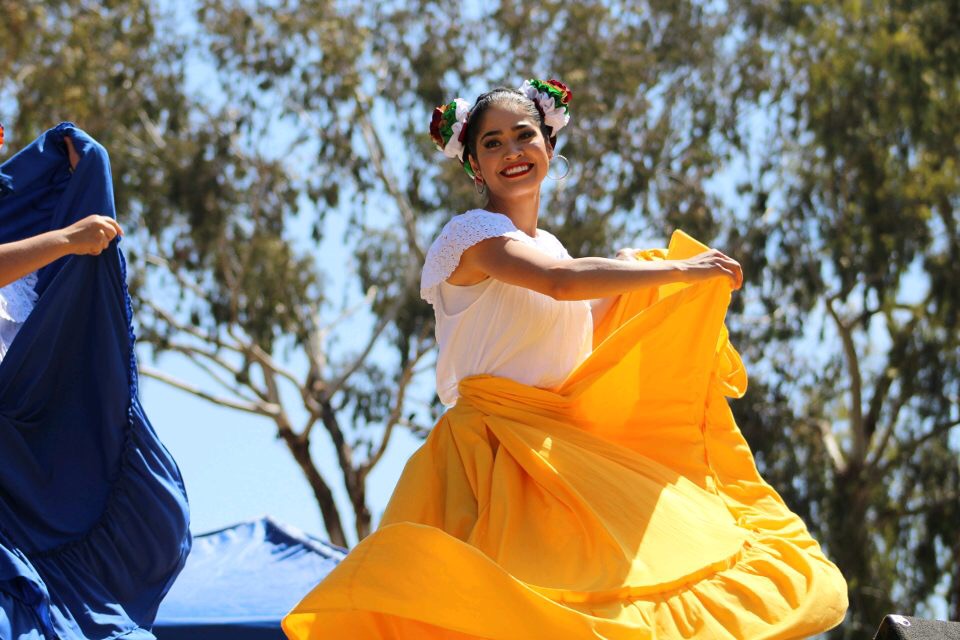The Ballet Folklorico Xochipilli de SDSU is a group that works to explore Mexican culture through the art of dance.
The club is named after the Aztec god of dance, Xochipilli.
The style of dance is called ballet folklorico, a traditional dance originating in Mexico.
Despite ballet folklorico’s Mexican origin, it has a lot of different influences.
“(It is an) immigrant based dance with influences from indigenous people from Mexico, and European influences from Germany and Spain,” Christian Benavides, a graduate student working on his masters of arts in liberal arts and sciences, said.
There are many different ballet folklorico styles from different regions in Mexico and the Southwest region of the U.S.
Some of theses styles include Baja, where the dress resembles a more cowboy style, and Jalisco, where the dress is more similar to that of mariachi performers.
In addition to different costumes, ballet folklorico has completely different music and footwork as well.
The group on campus started a year ago and is currently working on becoming an officially recognized student organization.
In the little time they have been active, the group has had many performances that range from private parties to events on campus.
Biology senior Andrew Macias said he, along with the other dancers, enjoy answering questions and teaching people about ballet folklorico and their culture.
“I love performing in front of a crowd and seeing everyone’s face light up when we’re dancing because it does feel like they are embracing our culture and actually getting to know it instead of just whatever their previous thoughts about it were,” Macias said.
Ballet folklorico is danced during celebrations and can be seen around San Diego in places like Balboa Park and Old Town.
Benavides said having a group on campus allows people to not just see the dance, but learn more about it from their fellow students.
“It is interesting to do it in a university because we actually have the ability to talk about it whereas outside it is more people just seeing it and they don’t know what it means,” Benavidas said. “Here we have the space to talk about the history and educate people about it and what it means.”
The dancers in this group said this is the most important part for them —they learn more about their culture through dance and experience the diversity at SDSU.
“(My) favorite part is being in touch with my roots or my ancestors roots,” SDSU alumna Jessica Gonzalez said. “Being a student, not only did I get an education through my classes but outside of them as well.”
The group said they will most likely be performing at the Dia De Los Muertos event hosted by the Center for Intercultural Relations from 5:30-7:30 p.m. on Nov. 1.
The club’s next official performance is on Nov. 18 for the Movimento Estudiantil Chicanx de Aztlan’s 47th annual conference for high school students at SDSU.
The Ballet Folklorico Xochipilli de SDSU is always open and looking for new members to join. Many of the originating members had no dance experience prior to joining, so the club is inclusive to all people.
The group is not just performance based, so students can attend meetings to learn the dance without the pressure to preform in front of an audience.
Interested members can contact Xochipilli.sdsu@gmail.com to find out more information about the group.







